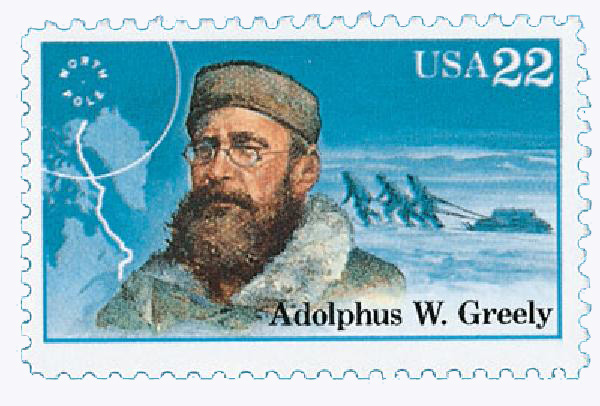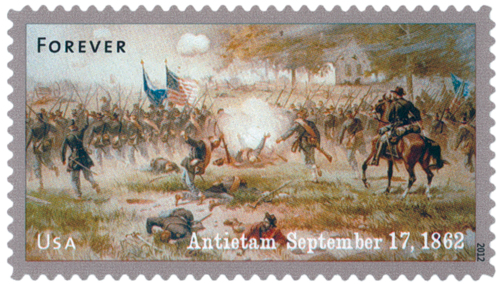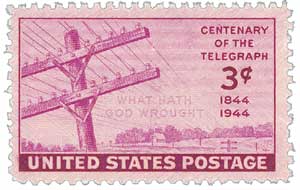
# 2221 FDC - 1986 22c Arctic Explorers: Aldolphus W. Greely
Â
22¢ Adolphus Greely
Polar Explorers
City: North Pole, AK
Quantity:Â 5,825,050
Printed By: American Bank Note Co
Printing Method: Photogravure
Perforations: 11
Color: Multicolored
Birth of Adolphus Greely

Explorer Adolphus Washington Greely was born on March 27, 1844, in Newburyport, Massachusetts. He served with the Union Army during the Civil War and later led a polar expedition. Greely was the second person in history to receive a Medal of Honor for “lifetime achievement.â€
Greely came from a poor family and saw the military as a way to move up in life. When the Civil War broke out, he repeatedly tried to enlist but was turned away because of his age. Greely was eventually enlisted and joined the 19th Massachusetts Infantry Regiment. He participated in some bloody battles during the war, including Antietam and Fredericksburg. Wounded three times, he rose to the rank of sergeant and commanded the 81st Colored Troops. After the war, Greely led his troops to New Orleans during a yellow fever epidemic.

Greely was commissioned a second lieutenant in the 36th Infantry in 1867. In that role, he studied telegraphy and electricity with General Albert Meyer, who founded the Signal Corps. Greely oversaw the installation of telegraph lines in the frontier and helped Meyer create the US Weather Bureau. Through this work he became a knowledgeable meteorologist with an interest in storm systems.

In 1881, the US and 11 other nations organized the First International Polar Year. It was a joint effort to study the polar regions to help them better understand Earth’s climate. Greely volunteered to lead the American expedition and was joined by 24 soldiers who knew little about science or the sea but were hard workers.

The expedition departed from St. John’s, Newfoundland on July 7,  1881. They sailed to Lady Franklin Bay where they built Fort Conger and established their meteorological station. A party from the expedition also traveled farther north than any previous expedition, taking the honor away from the British who had held the record for two centuries. One of the expedition’s organizers suggested they should send their ship away, so the men would feel more emboldened to explore inland, and Greely agreed.

However, resupply parties sent in 1882 and 1883 failed to reach them and they were ordered to Cape Sabine, where a rescue party would be waiting. But there was no rescue party or supplies waiting for them. After the first two rescue attempts failed, the Army gave up hope. However, when Congress and the Army didn’t respond to her requests, Greely’s wife went to the press. With the situation in the public spotlight, they sent another rescue mission led by Winfield Scott Schley. This one finally reached them, but found only six men, including Greely, were still alive. A doctor said they wouldn’t have lasted another 48 hours. Greely had kept meticulous records of the expedition and wrote two books about it.

Greely was promoted to Chief of the Signal Corps in 1887. During his 19 years in that role, he oversaw the military’s use of telegraphs, automobiles, and other new technologies. He was placed in command of the Pacific Division at the Presidio of San Francisco in 1906. That same year, he oversaw the relief efforts in the wake of the San Francisco earthquake.
After retiring in 1908, Greely represented the US Army at King George V’s coronation. In 1935, he received a Medal of Honor “for his life of splendid public service.â€Â He was the second person to receive the honor for lifetime achievement, rather than an act of courage that risked his life. Greely died on October 20, 1935.
Â
Â
Â
22¢ Adolphus Greely
Polar Explorers
City: North Pole, AK
Quantity:Â 5,825,050
Printed By: American Bank Note Co
Printing Method: Photogravure
Perforations: 11
Color: Multicolored
Birth of Adolphus Greely

Explorer Adolphus Washington Greely was born on March 27, 1844, in Newburyport, Massachusetts. He served with the Union Army during the Civil War and later led a polar expedition. Greely was the second person in history to receive a Medal of Honor for “lifetime achievement.â€
Greely came from a poor family and saw the military as a way to move up in life. When the Civil War broke out, he repeatedly tried to enlist but was turned away because of his age. Greely was eventually enlisted and joined the 19th Massachusetts Infantry Regiment. He participated in some bloody battles during the war, including Antietam and Fredericksburg. Wounded three times, he rose to the rank of sergeant and commanded the 81st Colored Troops. After the war, Greely led his troops to New Orleans during a yellow fever epidemic.

Greely was commissioned a second lieutenant in the 36th Infantry in 1867. In that role, he studied telegraphy and electricity with General Albert Meyer, who founded the Signal Corps. Greely oversaw the installation of telegraph lines in the frontier and helped Meyer create the US Weather Bureau. Through this work he became a knowledgeable meteorologist with an interest in storm systems.

In 1881, the US and 11 other nations organized the First International Polar Year. It was a joint effort to study the polar regions to help them better understand Earth’s climate. Greely volunteered to lead the American expedition and was joined by 24 soldiers who knew little about science or the sea but were hard workers.

The expedition departed from St. John’s, Newfoundland on July 7,  1881. They sailed to Lady Franklin Bay where they built Fort Conger and established their meteorological station. A party from the expedition also traveled farther north than any previous expedition, taking the honor away from the British who had held the record for two centuries. One of the expedition’s organizers suggested they should send their ship away, so the men would feel more emboldened to explore inland, and Greely agreed.

However, resupply parties sent in 1882 and 1883 failed to reach them and they were ordered to Cape Sabine, where a rescue party would be waiting. But there was no rescue party or supplies waiting for them. After the first two rescue attempts failed, the Army gave up hope. However, when Congress and the Army didn’t respond to her requests, Greely’s wife went to the press. With the situation in the public spotlight, they sent another rescue mission led by Winfield Scott Schley. This one finally reached them, but found only six men, including Greely, were still alive. A doctor said they wouldn’t have lasted another 48 hours. Greely had kept meticulous records of the expedition and wrote two books about it.

Greely was promoted to Chief of the Signal Corps in 1887. During his 19 years in that role, he oversaw the military’s use of telegraphs, automobiles, and other new technologies. He was placed in command of the Pacific Division at the Presidio of San Francisco in 1906. That same year, he oversaw the relief efforts in the wake of the San Francisco earthquake.
After retiring in 1908, Greely represented the US Army at King George V’s coronation. In 1935, he received a Medal of Honor “for his life of splendid public service.â€Â He was the second person to receive the honor for lifetime achievement, rather than an act of courage that risked his life. Greely died on October 20, 1935.
Â
Â













